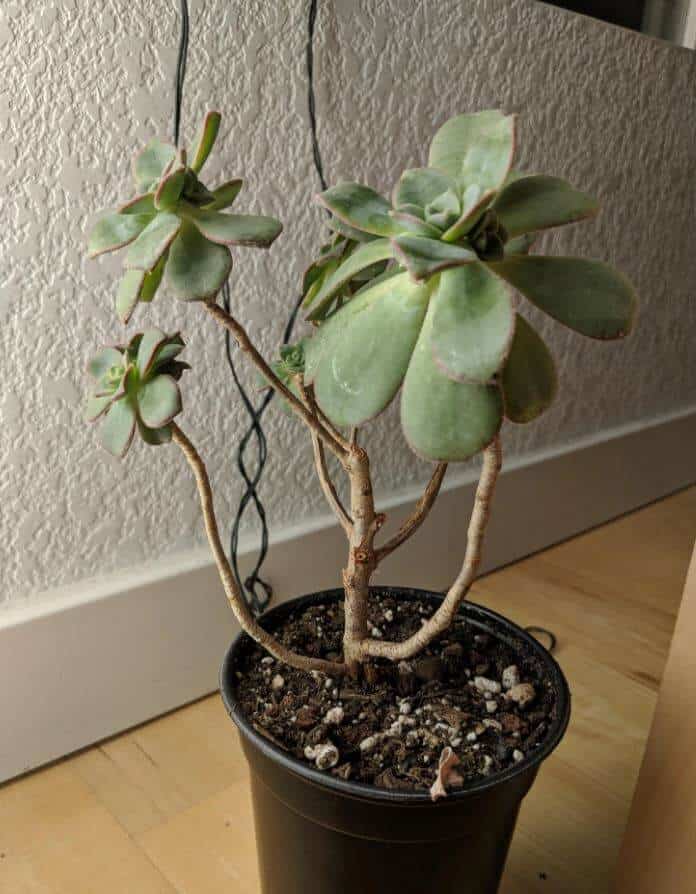Last Updated on July 20, 2023 by a Friendly Gardener
If you are new to cultivating succulents and cacti, you may not be familiar with plant bases and stems turning brown and woody. This process is known as corking. If parts at the base of your succulent begin to turn brown, you may be witnessing corking, a natural part of your plant’s aging process, and not necessarily some disease or fungus.
Succulent Stems Turning Woody
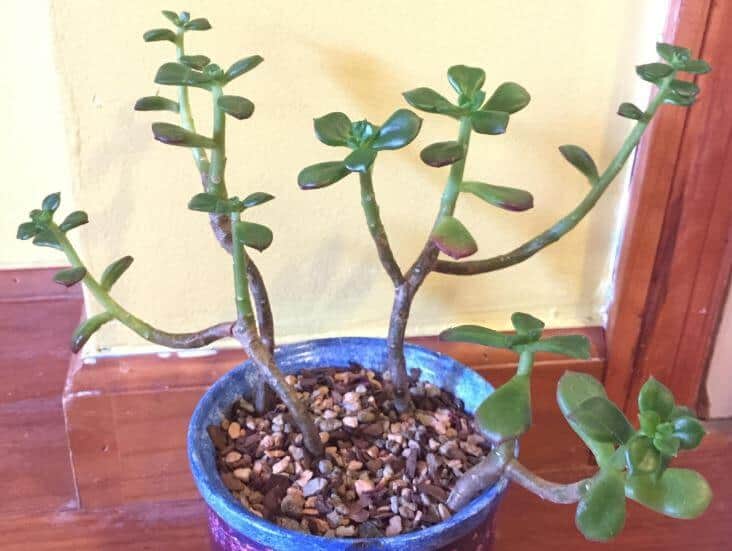
Succulent stems will generally begin the corking process at the base of the plant or stem. What appeared to be green the last time you examined it is now a dullish brown color. You might even assume it’s dead or dying. This is usually a very slow and gradual process. If discoloration appears rapidly, it may not be corking but an infection. With corking, stems will often begin to look like a kind of tree bark.
Why Do Succulent Stems Cork?
As succulents grow and age, they can become top-heavy. Succulents like the varieties of crassula ovata can risk falling over or breaking if they become top-heavy. This heaviness is due to their capability to retain and store moisture. The extra weight can become a problem if the succulent’s stem is not sufficiently strong to sustain this weight. Often succulents will begin to cork stems as they continue to grow to aid in creating stability for the plant. As stems cork, the stem fibers start to harden to support the upward expansion of the succulent.
Succulents do not have a rapid growth habit. You may have your succulent for quite some time before you actually notice any corking. Many succulent species require lengthy periods of growth before they reach a size that requires this type of support. There is no definite age when succulents begin to cork, so you can expect some to begin early, and others that will do so when they need support for an expanding plant. The principal reason for corking is aging.
Is Corking Damaging?

Many gardeners may find corking unattractive, but this natural aging process will not damage your succulent. Or those that find woody stems unattractive, no cure will inhibit, slow, or ‘cure’ the process.
Corking patterns will vary and have differing designs or markings. It can actually be viewed positively because it indicates that your succulent has lived long enough and matured sufficiently to need extra support. So, it’s a credit to your gardening skills!
Corking is permanent once the process begins. Stems will remain brown for the remainder of the plant’s life.
If you really hate corking for aesthetic reasons, consider propagating your succulent for a younger, greener version.
How Do I Know If My Succulent Is Corking?
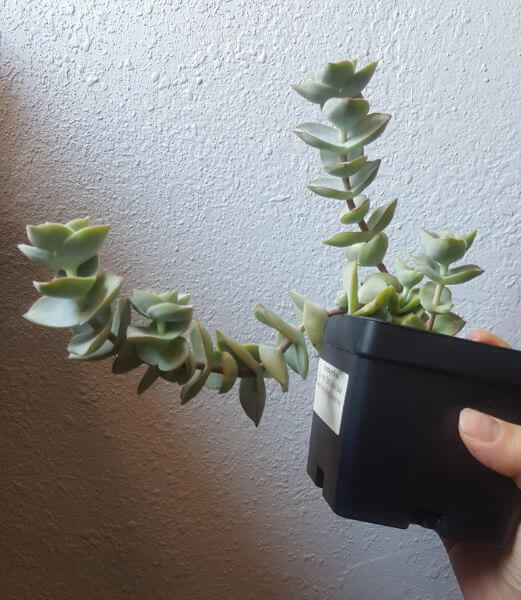
Corking will start at the bottom of the plant at the level of the soil surface and develop relatively consistently around the stem although it will most likely not be uniform in its shape. An important aspect of corking is that it will not appear in patches or only on one side of a stem or plant. If brown begins at the top of stems or in a specific area of your succulent, the plant may have a health issue that has nothing to do with corking.
Depending on the age of your succulent, stems can become quite woody. When you note discoloration, it’s a good idea to check the firmness of the spot. If the woody stem is hard or firm, then the woody stem is a result of corking. Tree bark will not give in when pressed, nor should succulent-corking. If the woody stem is mushy or soft, your succulent stem may be rotting. The best way to confirm that your succulent is corking is through touch.
Another factor to consider is how quickly a brown patch appears. If it happens from one day to the next. A rapid change overnight can implicate serious health issues such as sunburn, rot, and extremely cold temperatures, among others.
When a succulent feels mushy, and is brown, then it is most likely the victim of rot and you need to check the root system. Remove the succulent from its soil mixture and check for darky, mushy, and smelly roots. Infected roots need to be pruned off. Remaining healthy roots should be treated with a fungicide like neem oil, and your succulent should be replanted in fresh soil mix in a clean, sterilized container.
Succulent corking will be firm and similar to tree bark. Anything else will not be corking and may be a serious health issue.
Factors to the Development of Woody Succulent Stems
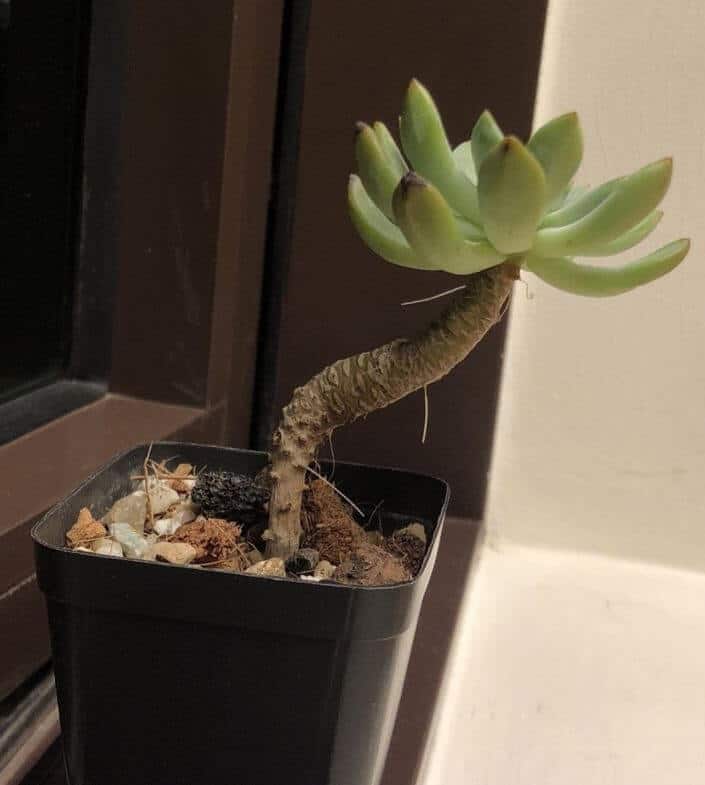
While natural aging is the principal cause of woody succulent stems, several other conditions can contribute to woody succulent stems.
Stems may begin to cork if your plant is exposed to very bright light for lengthy periods. If you like corking, increase the amount of light your plant is receiving but beware of sunburn. If you want to avoid corking, provide more shade.
Rot vs. Succulent Corking
Corking cannot be mistaken for rot. Rot will feel soft and perhaps mushy, while corking is firm or hard to the touch. A firm woody stem indicates your succulent is corking.
Can I Remove My Succulent’s Corking?
Theoretically yes, the corked area can be removed, but you would harm your plant.
Final Thoughts
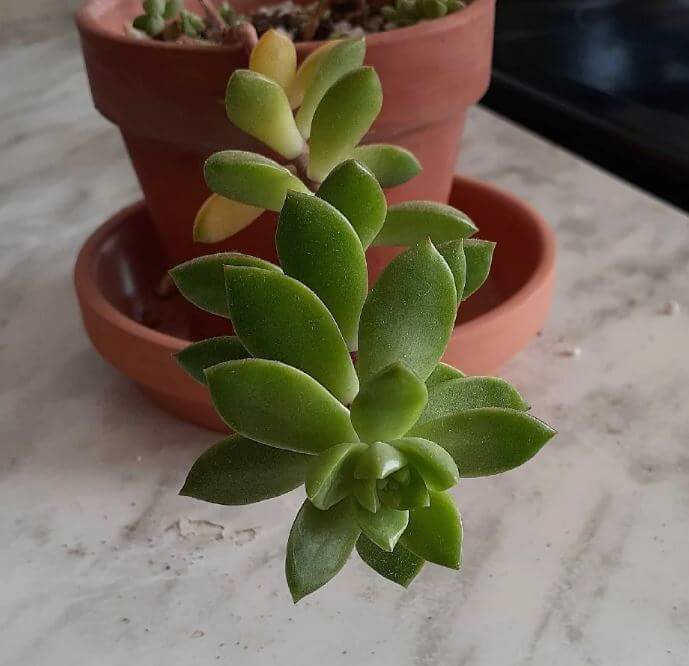
If you notice discoloration or a woody look to your succulent stem, take heart, it may be evidence of your gardening skills and the fact that you kept your plant alive long enough to develop corking.
Nonetheless, you do need to verify that woody stems are the result of corking. Texture and firmness are the best indications of what is happening with your succulent stem.

